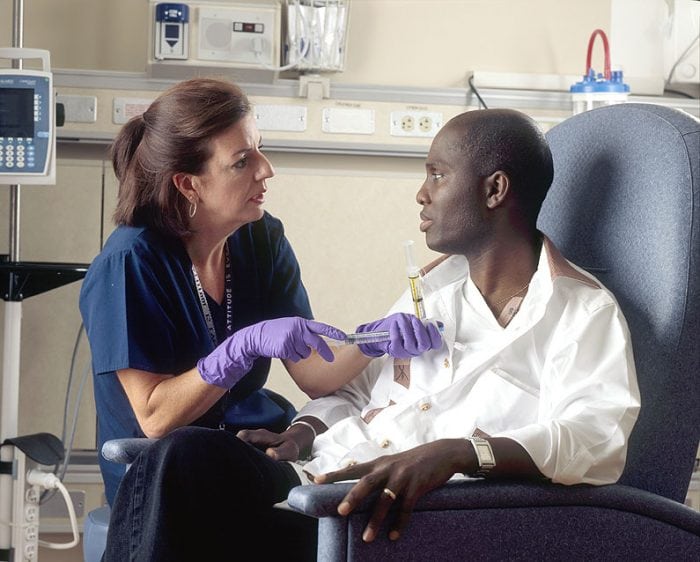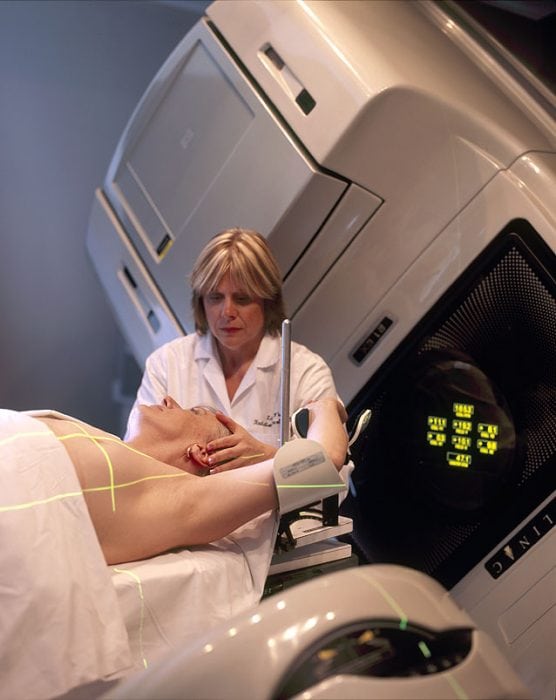
A recent study released in the Journal of the American Medical Association’s JAMA Oncology has reported that cancer patients who choose to receive alternative medicine based therapies over traditional medicine therapies (like radiation, chemotherapy, and surgery) are more likely to die than those who used the traditional therapies.
Alternative medicines didn’t seem to do any great harm if they were applied alongside conventional therapies, yet when people chose to pursue alternative treatments instead of the proven therapies, they were approximately twice as likely to die from cancer.
A Risk Of Dying Twice As High
James Yu, from the Yale Cancer Center, was the corresponding author on the study and he explains that the study was done in response to a lack of comparative data between the effectiveness of alternative therapies and conventional, effective therapies. The FDA and medical professionals have argued for years that unproven therapies often entice patients away from proven therapies to their detriment, yet this is one of a few times that the treatments have been directly compared. (This is actually the second study by Yu, Skyler Johnson, and colleagues).
The research team analyzed data collected from almost 2 million patients with various forms of cancer. While most of cancer patients didn’t use alternative therapies or didn’t admit to using them, around 260 of them did. When comparing the outcomes of these patients to approximately 1000 patients who had used traditional therapies and not used alternative/complementary therapies, it was found that those who used the alternative therapies showed a much higher risk of death. The patients who chose to use alternative medicines had a five-year survival rate that was only 82.2%, down from 86.6%, which represent a risk of dying twice as high.

Photo: National Cancer Institute, Public Domain
The authors of the study say that the difference found in the study likely underestimated the harmful effects of some alternative medicines because the alternative medicine group started out healthier and younger overall than the others within the study. Given this, it’s entirely possible that alternative medicines more than double one’s risk of dying over a five year period.
Around seven percent of those who invested in alternative therapies refused to undergo cancer surgery, in comparison with the only 0.1% of those who used traditional treatments. Almost one half of the group refused radiation therapy while more than a third refused either hormone therapy or chemotherapy.
An analysis of the data revealed that the demographic most likely to pursue alternative treatments over traditional treatments were younger women with more money and more education. Yu explains that many cancer patients have unsupported views of the efficacy of alternative therapies and that almost two-thirds of those who use them expect that the treatments will prolong their lives while one-third expect that it will cure their disease.
The research team didn’t specifically investigate individual therapies, but rather the team defined alternative treatments as a wide range of treatments not traditionally seen as effective therapies for cancer, such as acupuncture, tai chi, chiropractic manipulation, homeopathy, massage, special diets, and prayer.
A Human Response
Yu explains that when facing a severe illness and faced with treatments that are potentially laden with side-effects or disfiguring, it is a “very human response” to wonder about alternative treatments. While Yu says he understands the impulse to invest in alternative treatments, those who are in vulnerable states can easily fall victim to ineffective treatments pushed by ill-informed or unscrupulous practitioners of alternative therapies.

Photo: National Cancer Institute, Public Domain
Yu places a greater responsibility on doctor’s to listen to their patient’s concerns and to not only provide them with information that will help inoculate them against harmful alternative therapies but to also assuage their fears when possible. Says Yu:
When a patient is using complementary medicine, make sure you are really listening to that patient and their needs because they are more likely to refuse treatment… If you could cure cancer with baking soda, who wouldn’t want to do that… I completely understand and empathize with patients.
Yu even argues that if an alternative therapy genuinely makes the patient feel better, he supports the choice of the patient to use it. This assumes, however, that the patient has not decided to use alternative treatments in place of real treatments and that the alternative treatment does not interfere with the proven treatment in some manner. Yu argues that pas research implies that “complementary therapies”: like meditation, yoga, and massage can improve people’s quality of life, which is why it is estimated that somewhere between 48% to 88% of cancer patients have used the therapies alongside their regular treatments.
Only Science-Based Medicine
Yet some medical professionals, like Dr. Steven Novella, a clinical neurologist at Yale University School of Medicine, and host of the podcast The Skeptic’s Guide to the Universe, argue against some of Yu’s assertions. Novella argues that the data supports the fact that patients aren’t (usually) turning to alternative medicines because of desperation, rather the fact that most of the people who used alternative medicines were young, wealthier, healthier women, points to the phenomenon being cultural in origin.
In terms of the claim that alternative/complementary therapies may increase the quality of life for some patients, Novella also argues against this. Novella says that there is no such thing as “complementary therapies”, just therapies which are science-based and those which aren’t. Novella argues that those who market sham treatments have relied on the idea that “complementary medicines” are intended to improve quality of life, not improve outcome. This, Novella says, is a way of making “the softest claim they can, as a way to skirt the need for actual evidence or even a plausible rationale.” Novella says that the problem is that some people will inevitably decide that the complementary treatment itself was what worked, and abandon the genuine treatment for the alternative treatment.
Novella also proposes that it is the delay in receiving actual, effective treatment, that is mostly to blame for the worse health outcomes, and that it is unlikely that the direct harms from the alternative treatments are major factors. Finally, Novella says that the study didn’t capture the risk of death for those who swore off all standard therapies in favor of the alternative therapies, as those in the study had to have used at least one genuine therapy. Novella does agree with the general findings of the study, that alternative treatments aren’t effective for treating cancer:
Despite the hyped claims of proponents, the only apparent affect of using alternative treatments instead of mainstream treatments is that you lose the benefits of the mainstream treatments. If alternative treatments worked they should compensate for the delay or lack in standard treatment.









